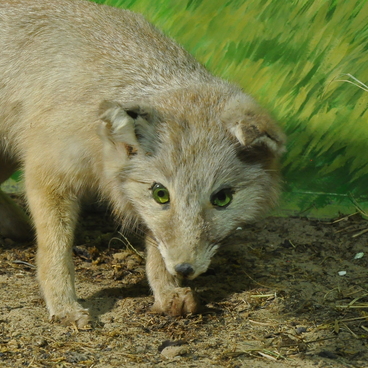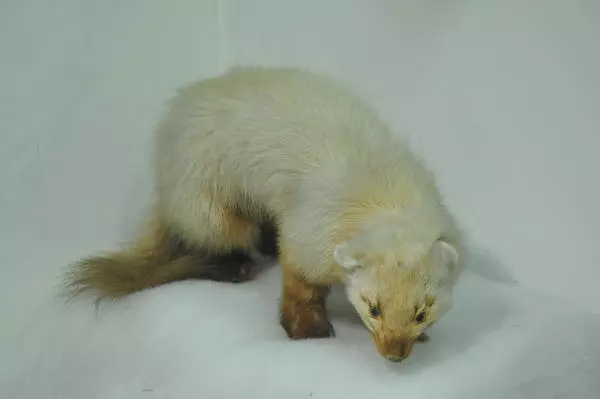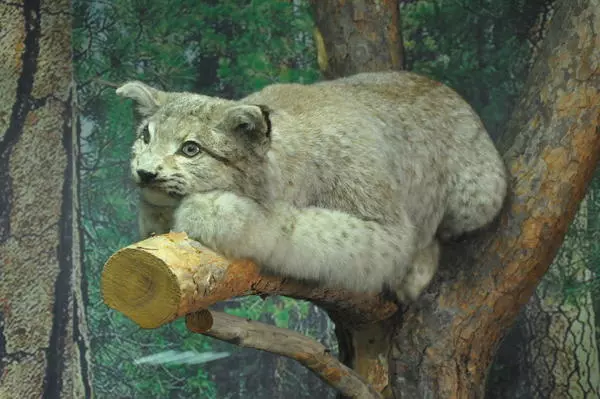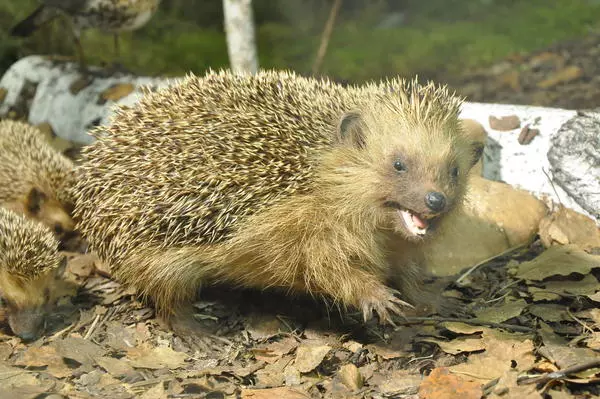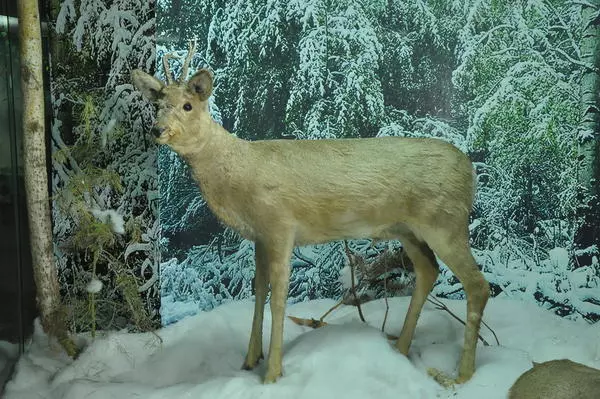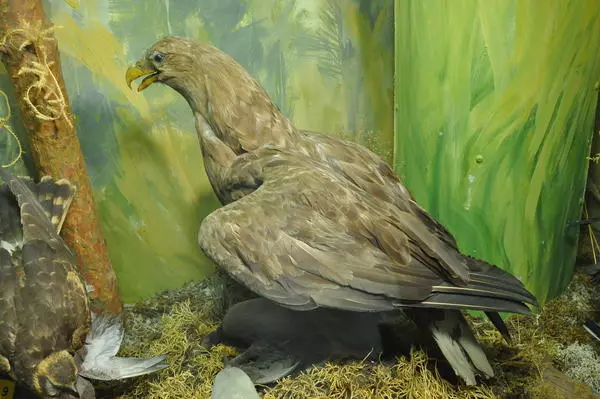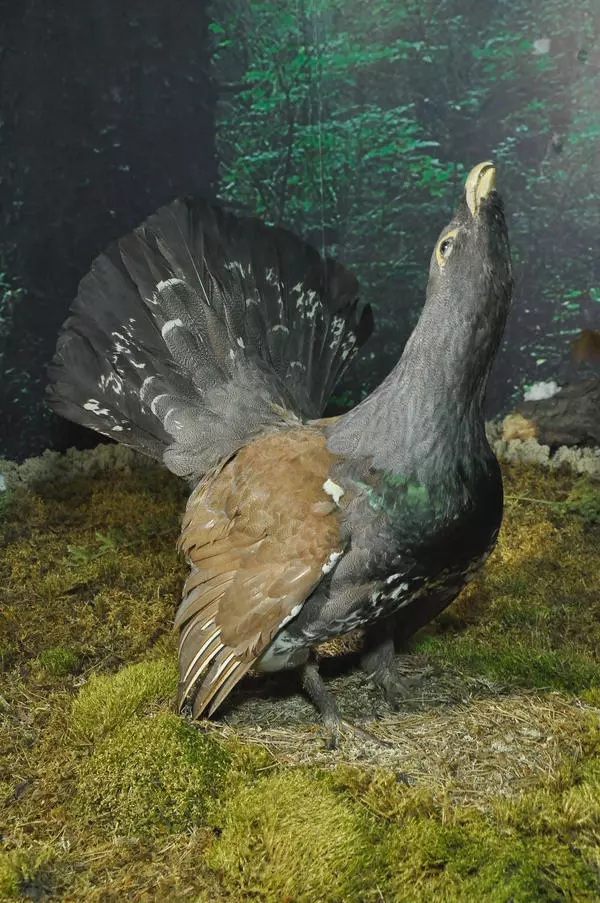Badger is a predator belonging to the marten family. Its Latin name is Meles meles. This is a medium-sized squat animal with a narrow elongated muzzle and a short shaggy tail. Badgers are brownish-gray in color, usually with a blurry dark strip along the ridge. The tail and tips of the ears are whitish, two wide black stripes stretching from nose to ears. With their long feet, the animals leave traces that resemble those of a bear cub or of a barefoot human child.
Badgers are encountered throughout Europe; in addition, they can be found in the Caucasus, Transcaucasia and Asia Minor. They live mainly in forests and steppes, settling on hills, slopes of ravines and gullies, near water bodies. Their diet includes insects, mice, frogs and a variety of plant foods. Badgers often hunt on rivers, in reedbeds.
Badgers have the ability to secrete a special odorous substance, which helps them recognize each other and communicate. Representatives of this species have such a sharp sense of smell that they are able to find mouse and hornet nests, worms and insects at a depth of several centimeters underground. In places of mass breeding of May beetles, badgers sometimes rip off whole meters of turf to get to the larvae. Strong legs with long claws allow the beast to even deploy curled hedgehogs. The badger hunts only by night, in the safest time. Its step is, as a rule, leisurely, and in case of danger it switches to leaps.
The badger’s body is very well suited for digging holes, as badger has blunt and long claws on its fingers. The neck of the beast is very short and its corpus is massive; therefore, leaning on its short legs, it easily sneaks into the ground.
Badger is a predator belonging to the marten family. Its Latin name is Meles meles. This is a medium-sized squat animal with a narrow elongated muzzle and a short shaggy tail. Badgers are brownish-gray in color, usually with a blurry dark strip along the ridge. The tail and tips of the ears are whitish, two wide black stripes stretching from nose to ears. With their long feet, the animals leave traces that resemble those of a bear cub or of a barefoot human child.
Badgers are encountered throughout Europe; in addition, they can be found in the Caucasus, Transcaucasia and Asia Minor. They live mainly in forests and steppes, settling on hills, slopes of ravines and gullies, near water bodies. Their diet includes insects, mice, frogs and a variety of plant foods. Badgers often hunt on rivers, in reedbeds.
Badgers have the ability to secrete a special odorous substance, which helps them recognize each other and communicate. Representatives of this species have such a sharp sense of smell that they are able to find mouse and hornet nests, worms and insects at a depth of several centimeters underground.
In places of mass breeding of May beetles, badgers sometimes rip off whole meters of turf to get to the larvae. Strong legs with long claws allow the beast to even deploy curled hedgehogs. The badger hunts only by night, in the safest time. Its step is, as a rule, leisurely, and in case of danger it switches to leaps.
The badger’s body is very well suited for digging holes, as badger has blunt and long claws on its fingers. The neck of the beast is very short and its corpus is massive; therefore, leaning on its short legs, it easily sneaks into the ground
Badgers are encountered throughout Europe; in addition, they can be found in the Caucasus, Transcaucasia and Asia Minor. They live mainly in forests and steppes, settling on hills, slopes of ravines and gullies, near water bodies. Their diet includes insects, mice, frogs and a variety of plant foods. Badgers often hunt on rivers, in reedbeds.
Badgers have the ability to secrete a special odorous substance, which helps them recognize each other and communicate. Representatives of this species have such a sharp sense of smell that they are able to find mouse and hornet nests, worms and insects at a depth of several centimeters underground. In places of mass breeding of May beetles, badgers sometimes rip off whole meters of turf to get to the larvae. Strong legs with long claws allow the beast to even deploy curled hedgehogs. The badger hunts only by night, in the safest time. Its step is, as a rule, leisurely, and in case of danger it switches to leaps.
The badger’s body is very well suited for digging holes, as badger has blunt and long claws on its fingers. The neck of the beast is very short and its corpus is massive; therefore, leaning on its short legs, it easily sneaks into the ground.
